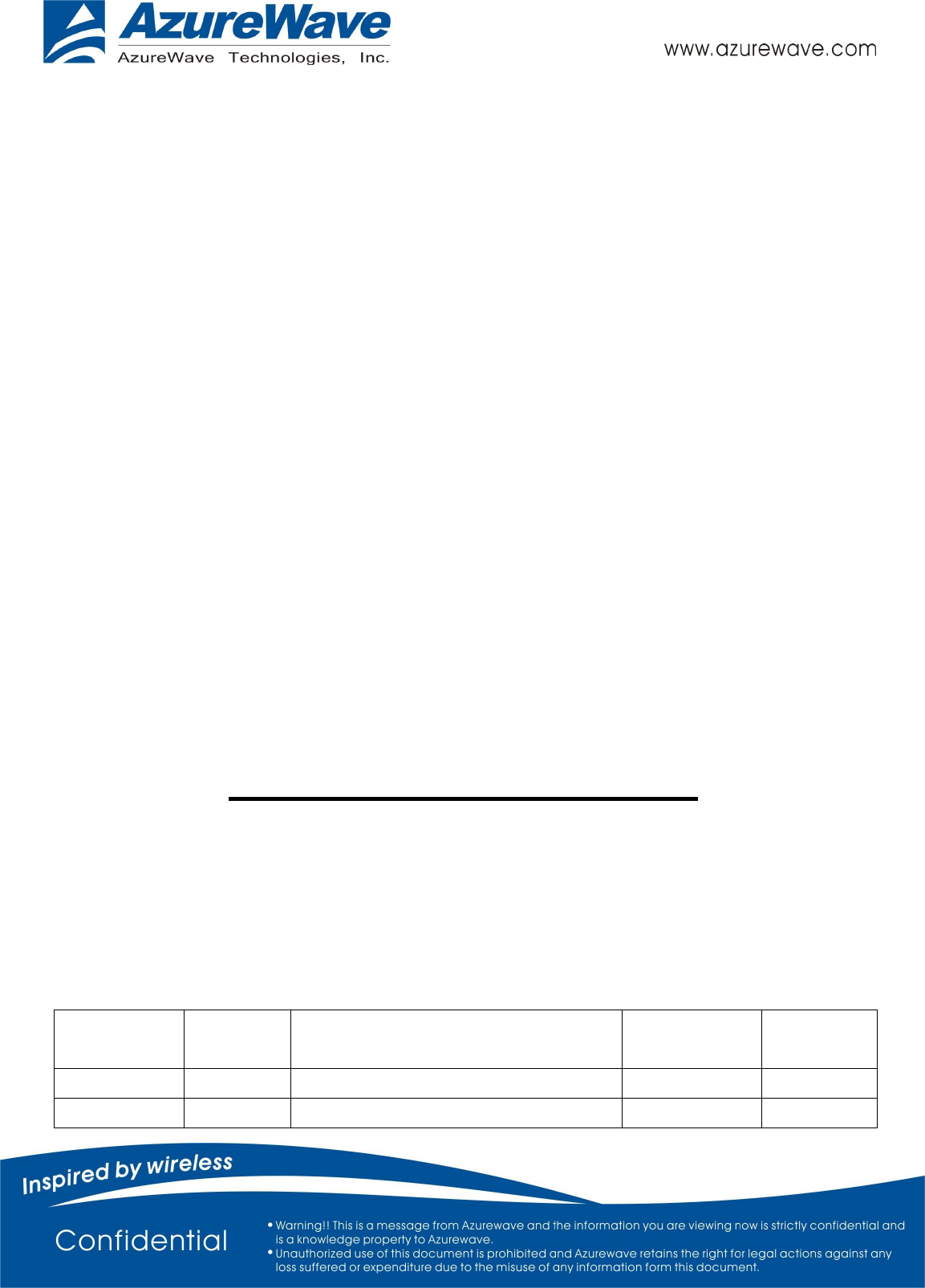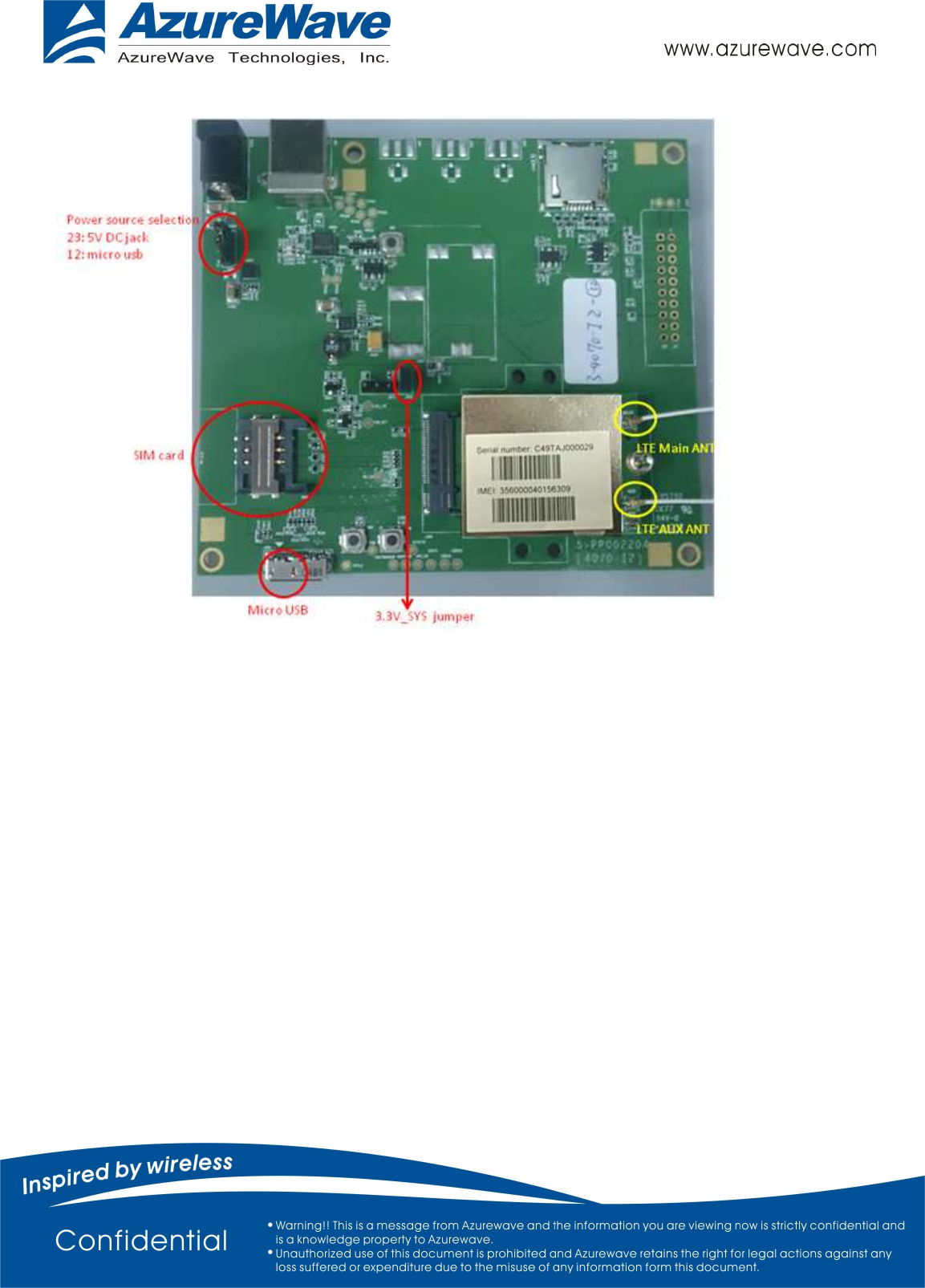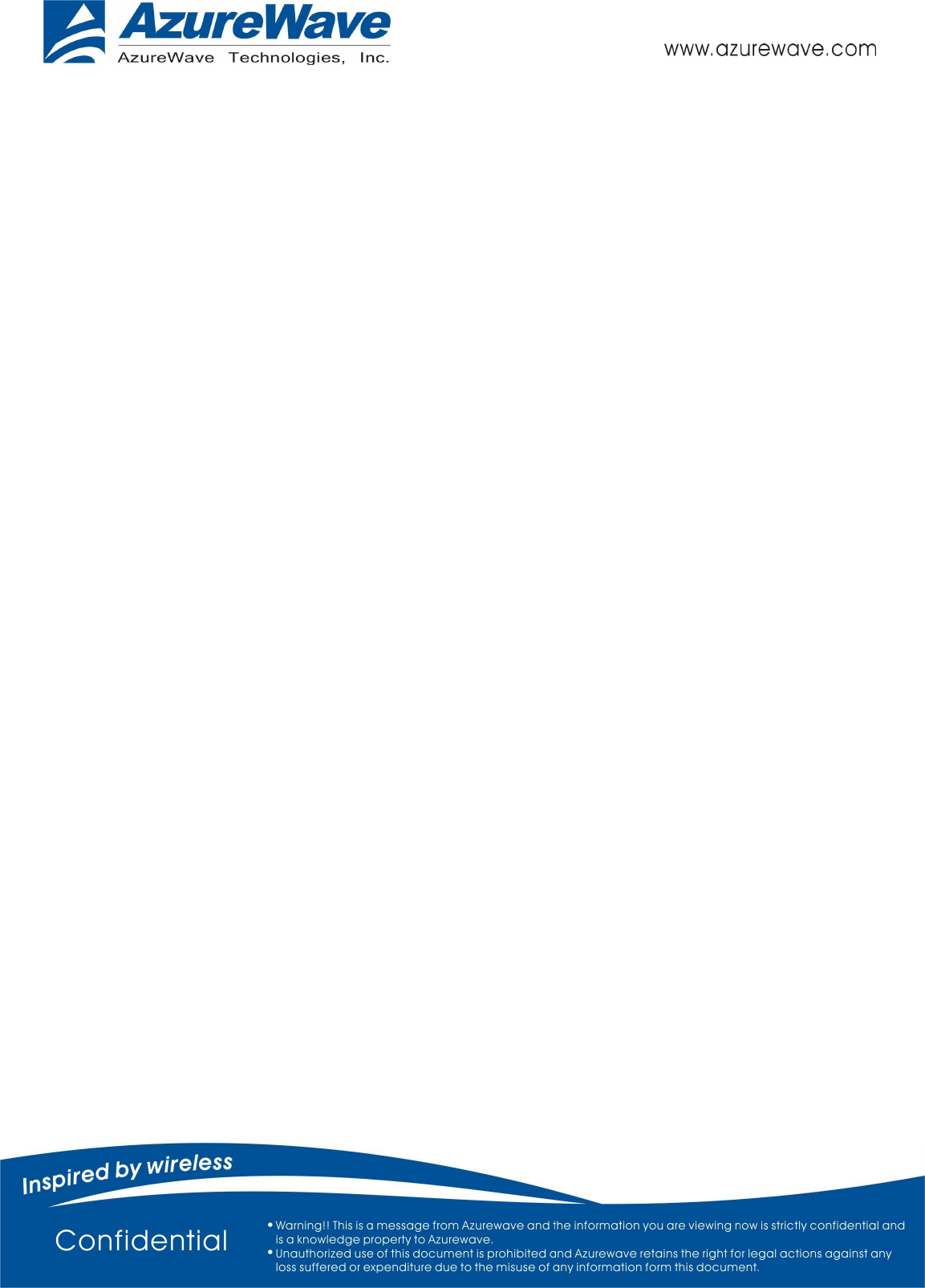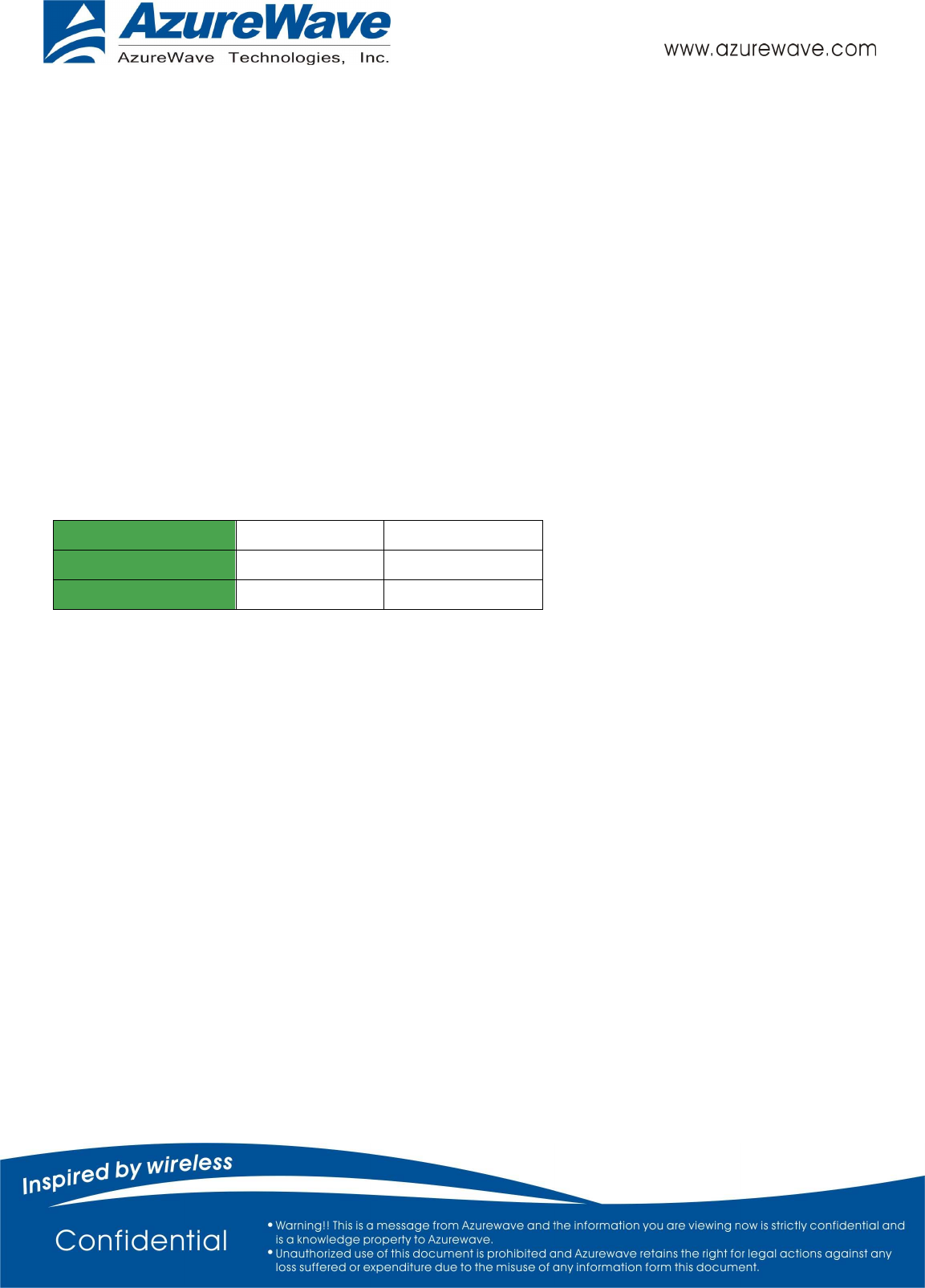AzureWave Technologies MF070 WWAN M.2 LTE Module User Manual
AzureWave Technologies, Inc. WWAN M.2 LTE Module Users Manual
Users Manual

- 1 -
WW-MF070
LTE PCIe M.2 Module card
Signaling test User Guide
Version 0.1
Document
release Date Modification Initials Approved
Ver. 0.1 2014/7/16
Initial version Renton Tao Ivan Chen
Ver. 0.2 2014/7/18
Add antenna gain information Renton Tao Ivan Chen

- 2 -
Step1: Select power source
You can choose your power source by micro USB or 5V DC jack.
Step2: Connect with host device
Put in SIM card, connect antenna to base station and micro USB to your PC then you can start signaling
testing.
*AT commands are supported through USB interface.

- 3 -
Federal Communications Commission (FCC) Statements:
This device complies with part 15 of the FCC Rules. Operation is subject to the following two
conditions: (1) this device may not cause harmful interference, and (2) this device must accept any
interference received, including any interference that may cause undesired operation of the device.
This equipment has been tested and found to comply with the limits for a Class B digital device,
pursuant to part 15 of the FCC rules. These limits are designed to provide reasonable protection
against harmful interference in a residential installation. This equipment generates, uses and can
radiate radio frequency energy and, if not installed and used in accordance with the instructions,
may cause harmful interference to radio communications. However, there is no guarantee that
interference will not occur in a particular installation.
If this equipment does cause harmful interference to radio or television reception, which can be
determined by turning the equipment off and on, the user is encouraged to try to correct the
interference by one or more of the following measures:
-Reorient or relocate the receiving antenna.
-Increase the separation between the equipment and receiver.
-Connect the equipment into an outlet on a circuit different from that to which the receiver is
connected.
-Consult the dealer or an experienced radio/TV technician for help.
FCC Warning: The FCC requires that you be notified that any changes or modifications to this device
not expressly approved by the manufacturer could void the user’s authority to operate the
equipment.
RF Radiation Exposure Statement:
This equipment complies with FCC RF radiation exposure limits set forth for an uncontrolled
environment. This equipment should be installed and operated with a minimum distance of 20
centimeters between the radiator and your body.
This Transmitter must not be co-located or operating in conjunction with any other antenna or
transmitter.
Only those antennas with same type and lesser gain filed under this FCC ID number can be used with
this device.
The final system integrator must ensure there is no instruction provided in the user manual or
customer documentation indicating how to install or remove the transmitter module.
Required end product labeling:
Any device incorporating this module must include an external, visible, permanent marking or label
which states: “Contains FCC ID: TLZ-MF070.”

- 4 -
Manual Information That Must be Included:
The OEM integrator has to be aware not to provide information to the end user regarding how to install or remove. This RF
module in the user’s manual of the end product which integrates this module. The user’s manual for OEM Integrators must
include the following information in a prominent location
Appendix A: Antenna Used in WW-MF070 WWAN Module FCC Tests
WW-MF070 WWAN module does not have its own transmitting antenna. Transmitting power
is delivered to the connector of the main antenna. In the tests on WW-MF070 WWAN
module for FCC certification, a dipole antenna is used and connected to the main
antenna connector.
The antenna gain of this dipole antenna is given in the following table.
LTE Operation Band
Band 4 Band 13
Frequency (MHz)
1710~1755 777~787
Antenna Gain (dBi)
5.42 10.75